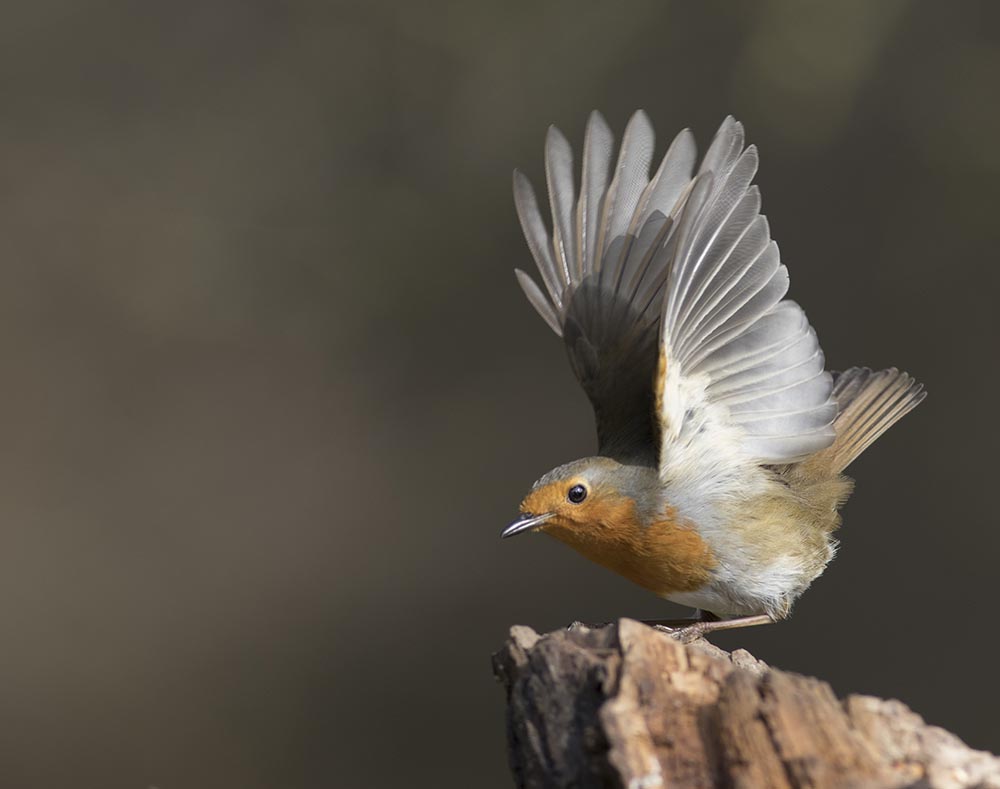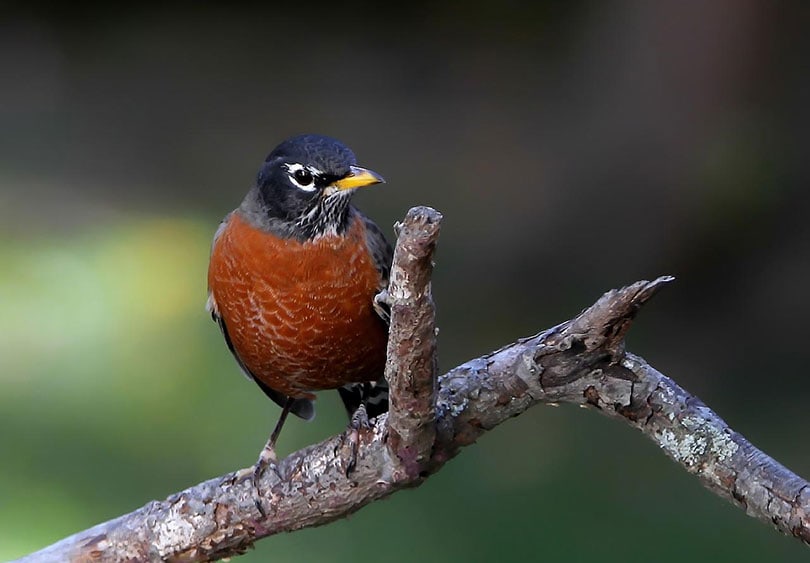Do American Robins Migrate? What You Need to Know
Last Updated on

American robins are a beloved and well-known songbird in North and Central America. They are found in every US state, except for Hawaii and in all the southern parts of Canadian provinces. These incredible birds are not very picky about where they live and can be found in the wild or developed areas with humans.
A common question that arises is whether the American robin migrates or not. On the one hand, yes, this is a migratory bird species. However, their migration patterns are not simply moving south when the weather gets cold. Their migratory patterns appear to vary greatly between males and females and even individual birds.

What You Need to Know About American Robin Migration
American robin migration is not decided by their ability to endure cold weather. These birds’ plumage actually changes with the weather giving them the insulation they need. However, one of the primary foods in their diet is worms and similar invertebrates. And when the weather changes, the food source is gone for the season.
The robins that go south to warmer states are typically females. In contrast, the males often remain in place to defend their territory until the weather causes food to get scarce. This incredible bird will adapt its diet to eat what it can during the winter. For example, instead of worms and insects, they begin eating winter berries such as junipers, hawthorns, crabapples, or hollies.
Even though the males often remain in the colder areas through the winter, you won’t hear them singing very much. But as spring gets closer, you’ll begin to hear them singing. This is due to their mating hormones kicking in.
Researchers don’t yet have a concrete answer as to why some robins don’t migrate, but the common belief is that it’s likely due to their aggressive defense of territories.

American Robins Migrate in Flocks
It’s common for these birds to gather in flocks for migration. And unlike some birds, they do not fly to their destination in one go. They will typically just stay ahead of the frost. This way, they can find food along their way to their destination.
Interestingly, the robins that decide to stay in colder weather often group together in flocks and move from area to area as the limited food supply demands.
Where Do American Robins Go?
There is no particular place that robins migrate to. Basically, they will go wherever they can still get food. This is much of the southern states, extending into Central America in places like Mexico, Bahamas, Bermuda, or Guatemala.
When everything begins to thaw, the robins return north. Quite often, they will follow the thaw as the season changes.

Helping American Robins During the Winter
Suppose you notice that American robins are overwintering or passing through your yard during the winter. In that case, there are a few things you can do to help them:
- Plant native fruit-bearing trees like juniper or hawthornes
- Don’t rake up all the leaves in your yard because this gives them material to nest with
- If you really want to get involved, you can set out fruit or mealworms and use a heated birdbath
- Don’t prune all the dead vegetation or plants in your yard.

Closing Thoughts
Some birds migrate 100% of the time, and others don’t at all. So, it’s cool to look at a bird that does both. It’s interesting how some American robins adapt to changing weather and change their diet accordingly, while others flock to warmer areas where the worms are abundant during the winter.
Featured Image Credit: Timothy Pace, Shutterstock
About the Author Shea Cummings
Shea Cummings is a passionate content writer who believes that the power of words is immeasurable. He leverages years of experience in various trades such as carpentry, photography, and electrical to bring his articles to life. His goal is to provide his readers with information that delights and informs. When he's not writing you can find him spending time in the outdoors or playing some Minecraft on the Xbox with his wife and two sons.
Related Articles:
10 Types of Hummingbirds in Arkansas (With Pictures)
8 Types of Hummingbirds in Nebraska (With Pictures)
5 Types of Hummingbirds in Idaho (With Pictures)
3 Types of Hummingbirds in Mississippi (With Pictures)
8 Types of Hummingbirds in Kansas (With Pictures)
5 Types of Hummingbirds in West Virginia (With Pictures)
5 Types of Hummingbirds in Ohio (With Pictures)
Where Do Nuthatches Nest? Nuthatch Nesting Habits Explained
